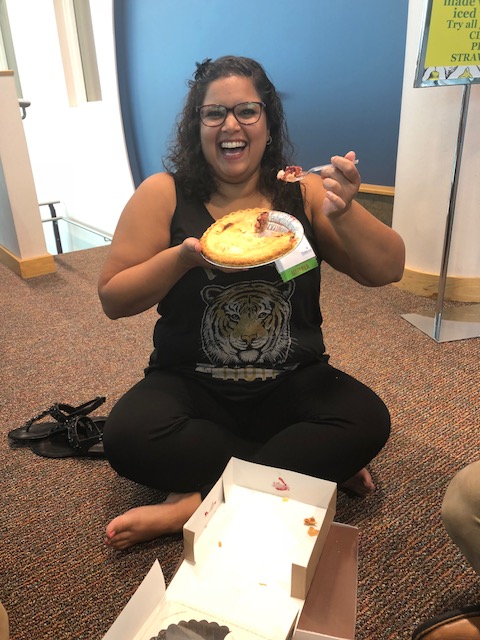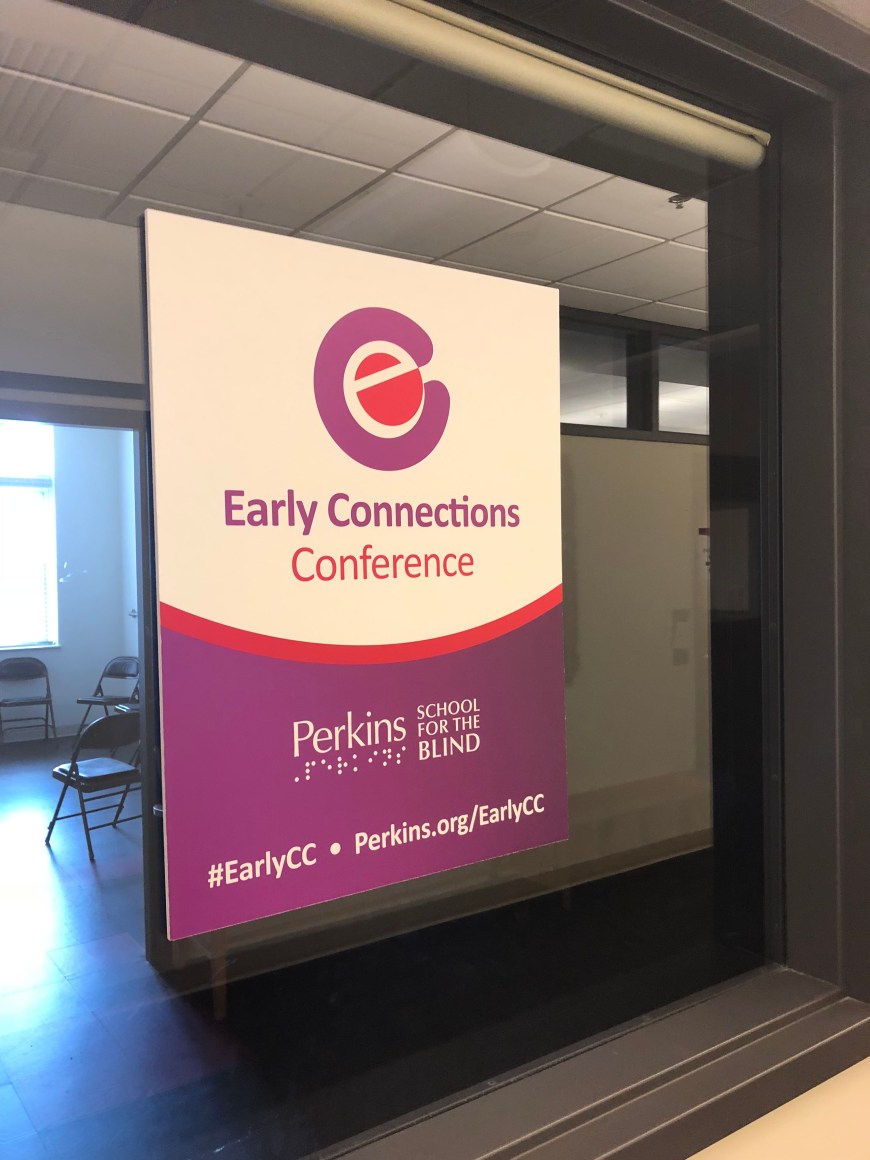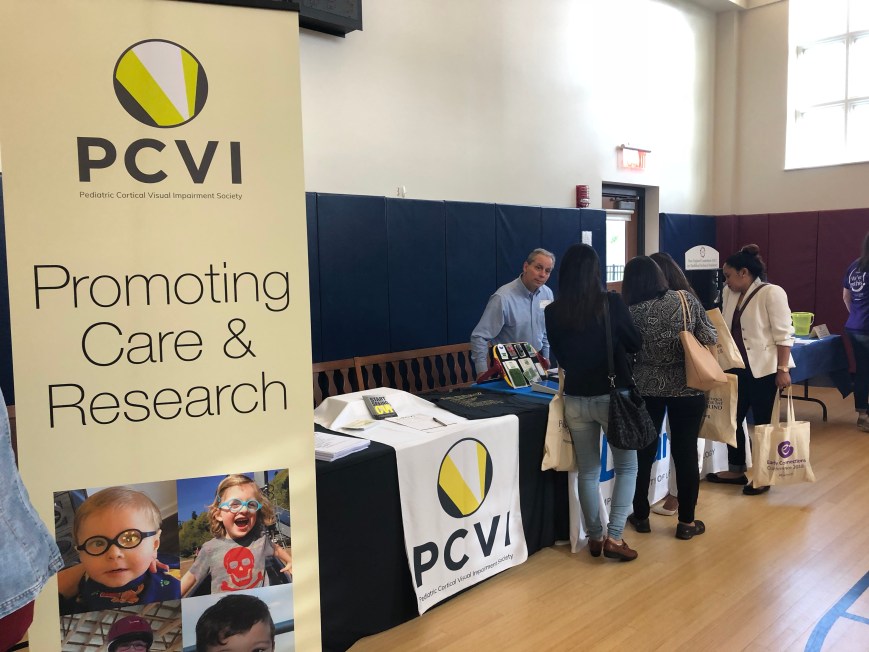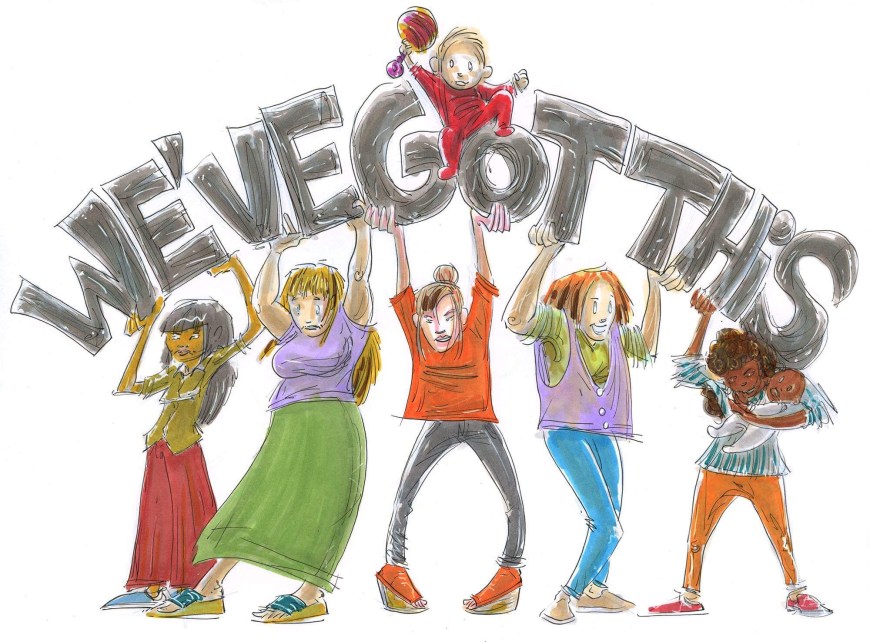Hello fellow families! Did you survive Spring Break? These periodic weeks off of school are very appropriately named aren’t they?
Spring. Break.
After 3, 4, 5… straight days of my delightful, strong willed, curious, demanding pre-teen who happens to have CVI and other diagnoses, I feel broken. 2 more days.
Two.
More.
Days.
Spring Break. I give. Uncle! You win.
But I digress.
There is an event on the horizon you may want to know about.
The 5th Annual Perkins CVI Symposium
From Perkins website: Please join us for a rare opportunity to listen to top experts in the field on Thursday, July 11 and on Friday, July 12.
Engage in collaborative efforts to advance progress related to the challenges and complexities with CVI in the areas of medicine and research, assessment and best practice, as well as parent/family education and advocacy.
Here is a link to find out more about this opportunity to meet researchers, doctors, teachers, advocates, and fellow families – trail blazers all.
http://www.perkinselearning.org/earn-credits/onsite-training/cvi-symposium
Perkins continues to lead the charge on raising awareness and training families, educators, and therapists about CVI, the #1 pediatric visual impairment in first world countries.
Perkins is committed to building capacity – teaching education and therapy professionals how to evaluate and to work with children with complex visual processing impairments.
Last year, several CVI Moms and Advocates attended the 4th annual symposium in April.

Jessica (G’s mom and the very first Mom on Monday) attended last year’s symposium.
She was in good company with several other CVI families who are advocating for better educational outcomes for their children.
And, she has been busy! Jessica created a podcast to highlight the stories of families of children with CVI.
Kaleidoscope: The Cortical Visual Impairment Podcast
Here is a link to this wonderful collection of stories:
Here is Jessica’s reason for advocating and traveling all over the country to learn what she can learn about CVI.

But I digress.
After attending the 4th Annual CVI Symposium last year, Jessica was kind enough to share some of her impressions of the meeting and the speakers.
—————————————————
Jessica’s Highlights from the 2018 CVI Symposium
The all day symposium was a “rare opportunity to listen to top experts in the field discuss current research and practice related to brain-based visual impairments.”
“The CVI Symposium sustained me. It is an amazing feeling to walk into a room and feel like you’re with your people.

I felt that same way last year at the PCVI conference. Spending in-person time with other parents of kids with CVI gave me strength and courage.
Hearing from experts on CVI from the medical and education professions energizes me to keep fighting to get Grace everything she needs.” Perkins…”is a lovely campus full of vision experts who are pioneering for us all.”
Presentations
A Parent’s Perspective: Burju Sari
Burju Sari, a mother of a child with CVI, gave the opening talk. She is also a TVI in early intervention. She was honest about her journey through denial, anger, acceptance. Her message was one of hope, love, and faith.
“He’s the glitter of our life,” she said of her son.
Research: Dr. Lotfi Merabet
Dr. Lotfi Merabet is an optometrist, neuroscientist and the Director of the Laboratory for Visual Neuroplasticity at the Massachusetts Eye and Ear Infirmary/ Schepens Eye Research Institute in affiliation with Harvard Medical School.
Dr. Merabet and his team discussed their fascinating research involving brain imaging and virtual reality to better characterize CVI for future research. The research is approached from a number of avenues: functional (task-based), behavioral (assessments), structural (white matter tractography and morphometry – how brain is wired), and connectivity (resting state).
Dr. Merabet said, “There are three things you can count on: death, taxes and neuroplasticity.”
He emphasized the difference in the brain wiring of a kid with CVI versus a kid with typical vision or ocular blindness.
The CVI brain is underconnected.
The CVI visual system is more sensitive and less robust.
There is a fundamental difference in the CVI brain and how we should intervene compared to a brain of someone with an ocular condition.
CVI Range (Roman): Ellen Mazel
From the CVI Teacher, Ellen Mazel –
“We have at this point one assessment for CVI that gives us an idea about functional vision. The CVI Range gives us what we need as professionals and as parents.”
Best Practices: Dr. Christine Roman-Lantzy
Dr. Roman-Lantzy presented on best practices. She explained that “best practices are a reflection of the times” and provided a brief history of education for the blind.
- In the 19th century, blindness education included braille instruction
- In the early 20th century, all visually impaired students were approached from a “sight saving” perspective
- “Beyond these doors vision will not be used”
- Children with low vision were blindfolded to “save” vision
- 1963 – Natalie Barraga’s study on visual efficiency proves that vision is not a fixed capacity to be developed. Educators now use braille only when the student has not useable vision. The field of low vision skyrockets with the belief that all children with some degree of vision must be visual users. In essence, the pendulum had swung the other way. The field had decided it was unethical to teach braille.
- Result of shifting away from braille was that students with vision impairments fell behind in literacy and other school tasks
- 1980s – Koenig & Holbrook offered a method to determine primary and secondary learning media (Learning Media Assessment)
- Learning Media Assessments are now considered to be best practice for students who are identified as visually impaired.
—————————————————
BUT
There may be a problem for students with CVI.
Most kids is Phase I are identified as potential braille readers because they aren’t using their vision. This assumption runs counter to what we’re trying to do to get them to improve their vision. If this is assumed, then vision is not being emphasized during the years of greatest neuroplasticity.
The upcoming Learning Media Assessment for CVI is a book in the works from Dr. Roman and Matt Tietjen, CVI Endorsed TVI)
—————————————————
According to Dr. Roman-Lantzy, the current best practices for children with CVI are the following:
Identification: systematic screening for CVI in close proximity to birth or time of event in order to receive a timely diagnosis within year of occurrence
- CVI Infant Screening
- Physicians / pediatricians are beginning to recognize CVI
Assessment: CVI Range with CVI Range Endorsed person
Education
- CVI-rich IEP
- CVI Schedule
- Direct & consult services
- What’s the Complexity Framework
- Orientation and Mobility
Dr. Roman also discussed her research at Pediatric VIEW, Phase III and what can go wrong with assessment and intervention for kids with CVI.
Thank you Jessica for these highlights from the 2018 CVI Symposium!
If you want to see last year’s presentations, check out the Perkins E-learning site.
http:/www.perkinselearning.org
Looking forward to the 2019 CVI Symposium:
What new insights into education and advocacy will happen at this year’s CVI symposium?
CVI Mom Rachel Bennett will present on the Family Education and Advocacy Panel!
What will you learn from the “experts”?
What will the “experts” learn from you?
Will you find “your people”?
And,
the burning question on everyone’s mind…
Who wants pie?
Okay, that last one may just be me.
Two more days. Sigh.
See you in July maybe?






 If you had told me 10 years ago that I would have a chance to speak to a group of families like mine, I would have paid more attention, or tried to – as it was the sleep deprivation and worry nearly killed me – so, maybe not.
If you had told me 10 years ago that I would have a chance to speak to a group of families like mine, I would have paid more attention, or tried to – as it was the sleep deprivation and worry nearly killed me – so, maybe not.









 The Northeast AER Conference in Burlington, Vermont wrapped up Friday, November 17th.
The Northeast AER Conference in Burlington, Vermont wrapped up Friday, November 17th.

